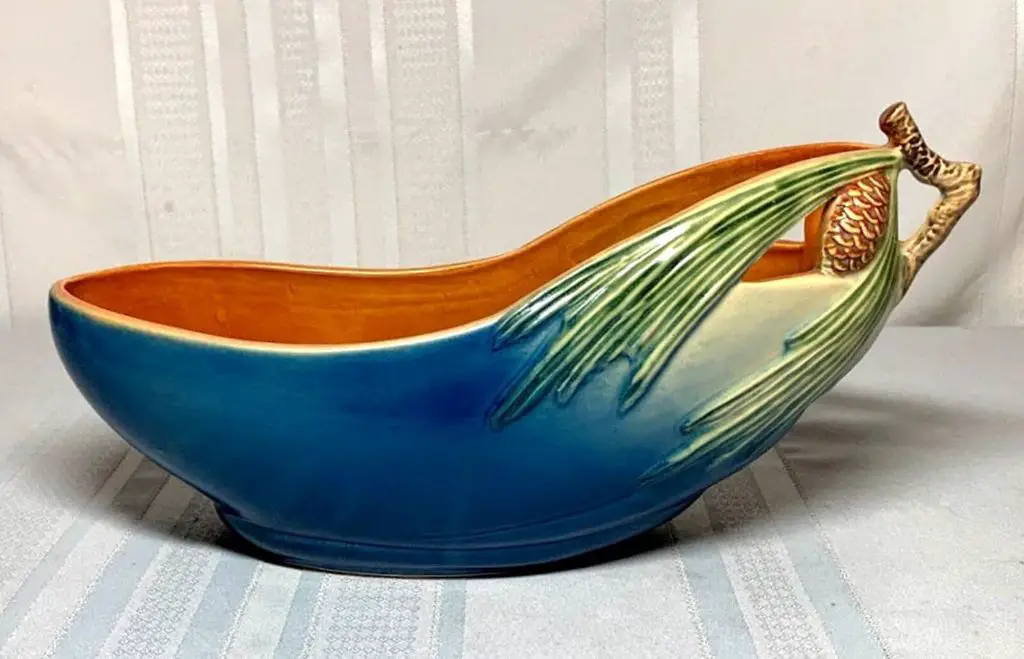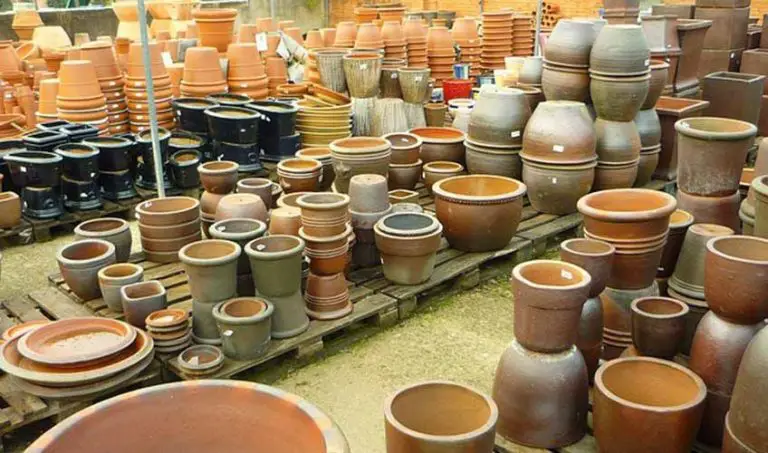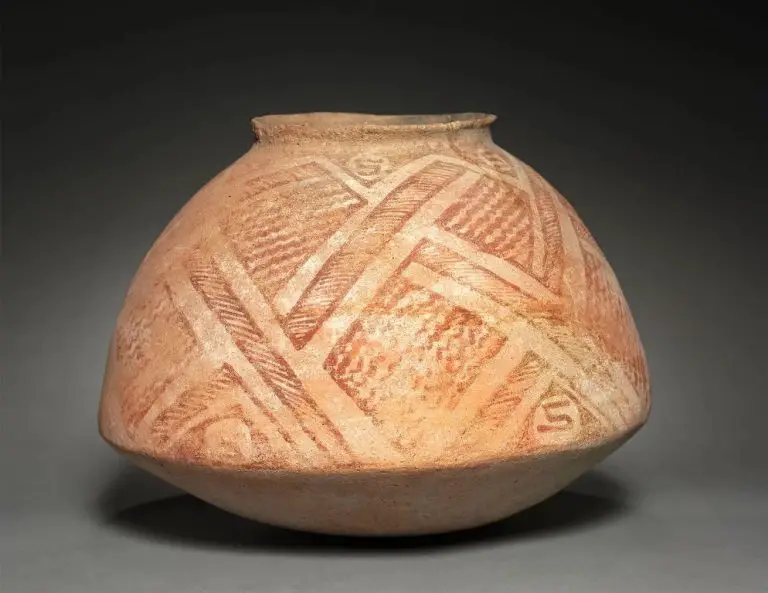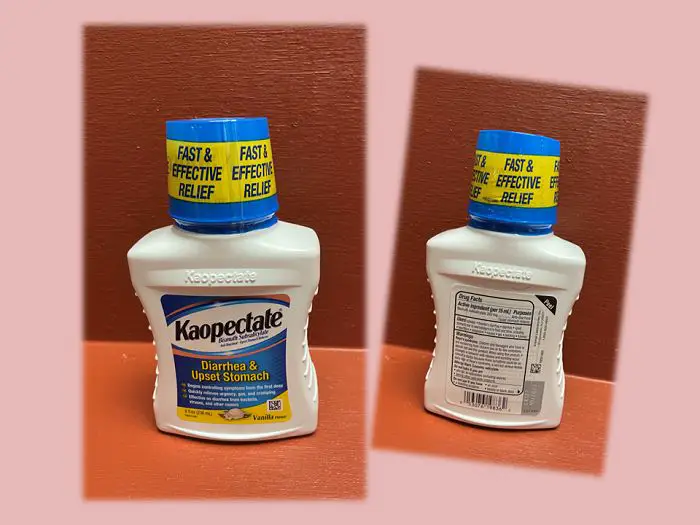How Collectible Is Roseville Pottery?
Roseville Pottery was founded in 1890 by J.F. Weaver in Roseville, Ohio. Starting out producing utilitarian stoneware, the company grew quickly and by 1915 was the largest pottery manufacturer in the world. Some of Roseville Pottery’s most popular and collectible lines included Rozane, Della Robbia, Zephyr Lustre, and Futura (Roseville Pottery).
While Roseville produced many beautiful and intricate designs over its long history, opinions vary on how collectible different lines and pieces are today. This article will provide an overview of Roseville Pottery throughout the decades and analyze what makes certain pieces valuable and sought-after by collectors.
Roaring 20s
The Roaring 20s were a prosperous time for Roseville Pottery. The company produced over 60 patterns during this era (Roseville Pottery Pattern). Popular patterns from the 1920s included Della Robbia, Rosecraft, Laurel, Futura, and Earlam. Roseville’s vases, jardinieres, and planters were in high demand as home decor took on an art deco style. In the early 1920s, a 6-inch vase sold for around $1.50 while fancier pieces like jardinieres went for $15-$20 (A Summary of All Roseville Pottery Patterns). Overall production and sales soared for Roseville during the 1920s to meet high consumer demand. Their affordable yet quality ceramics were accessible for middle-class homes embracing decorative floral pieces.
Great Depression Era
The Great Depression caused immense economic hardship across America in the 1930s. This greatly affected production at the Roseville Pottery. According to Vintage Roseville Pottery, “By 1935 most of the art pottery companies were closing their doors and going bankrupt due to the great depression. Even Roseville pottery was not immune to the economic hardships of the times.”
During the Depression era, Roseville shifted focus to more affordable household lines and simpler designs. As cited by Roseville Pottery, bold Art Deco and Art Nouveau styles were replaced with pastoral patterns like Blackberry, Snowberry and Thorn Apple. Pieces from the 1930s showcase more subdued earth tones rather than bright glazes.
Given the massive financial constraints and closures of competitors, Roseville Pottery pieces from the Great Depression era are quite rare. The company was striving just to stay afloat, limiting its output. Any surviving vessels and accessories from this time have since become coveted collector’s items.
Mid-Century Era
The Mid-Century Era from the 1940s to 1950s represented a peak in Roseville Pottery production and popularity. After struggling through the Great Depression, Roseville saw a resurgence following World War 2 as Americans began embracing mid-century design in the booming postwar economy. Roseville adapted its aesthetic to match popular mid-century style trends like bright colors and atomic, geometric patterns.
Some of Roseville’s most collectible and valuable lines came from this heyday period, including patterns like Sunflower, Pine Cone, Tourmaline, and Laurel. These patterns featured stylized floral and natural motifs with bold, saturated glazes in vivid 1950s colors like turquoise, chartreuse, orange, and pink. Mid-century Roseville Pottery pieces with these patterns in excellent condition can fetch premium prices at auction today.
Decline
In the 1950s, competition from overseas manufacturers caused trouble for Roseville Pottery. Imports of decorative household wares from countries like Japan flooded the market with lower-priced items. Despite attempts to keep prices competitive, Roseville struggled to keep up as labor costs rose. After a failed attempt to sell the company in 1953, Roseville Pottery officially closed its doors on Wikipedia in 1954.
The last pieces produced by Roseville in 1954 were part of the Pine Cone line. These final Roseville pieces featured a simple pine cone motif in muted earthy tones of brown, tan, and light green. They exemplified Roseville’s attempts to simplify designs and reduce production costs in the company’s final years. Though Roseville Pottery shut down decades ago, collectors still seek out these bittersweet last examples of Roseville pottery today.
Authentication
With the popularity of Roseville pottery, reproductions and fakes have flooded the market. Identifying authentic Roseville pieces takes some detective work. According to The Pottery Wheel, one way to distinguish real Roseville from counterfeits is to check the unglazed area at the bottom of a piece. Genuine Roseville will be stamped with the pattern name and form number. The glaze should also have an even application.

There are helpful guides available for identifying Roseville patterns and markings, like the article on The Spruce Crafts. Studying examples of authentic pieces is also useful. For highly valuable or questionable items, it’s advisable to enlist the services of an expert Roseville authenticator. They can examine details in-person and provide authentication reports.
Current Market
Roseville pottery remains a popular collectible today, with prices varying widely depending on the pattern, condition, and rarity of each piece. Common Roseville patterns like Blackberry sell for around $50-300 for vases, according to LiveAuctioneers. More rare patterns can fetch much higher prices, especially at auction. A 14-inch Della Robbia vase in excellent condition sold for $17,000 in 2007, setting a record for Roseville pottery, according to Just Art Pottery.
Prices have softened a bit since the 2000s when Roseville peaked in popularity, but rare pieces still command high prices from serious collectors. Quality pieces in popular patterns remain strong sellers in the $150-500 range. While not as hot as 20 years ago, Roseville still has an avid collector base chasing rare finds and special examples of the most iconic patterns.
Factors Affecting Value
There are several key factors that determine the value of a piece of Roseville pottery:
Condition
The condition of a Roseville piece greatly impacts its value. Pieces in pristine, mint condition with no chips, cracks, or repairs will command top dollar. Even small chips or flea bites can reduce value. According to Kovels (cite url), condition accounts for 50-60% of a piece’s value.
Rarity
Rarer patterns and shapes tend to increase value. Some patterns like Blackberry, Della Robbia, Wisteria, and Fuchsia are quite common and less valuable, while early Art Deco designs like Futura and Blossomtime are harder to find. Limited edition and experimental glazes also boost value. According to Antique HQ (cite url), rare pieces can sell for thousands.
Color and Pattern
Certain colors and patterns are more prized by collectors. Brilliant glazes like the pink Morning Glory and blue Azurean tend to be most valuable. Multicolor pieces and ones with metallic lusters also fetch higher prices. Popular patterns like Apple Blossom and Cherry Blossom are in demand.
Size
Larger pieces tend to be worth more than smaller ones. For example, a 10 inch vase may be worth significantly more than a 3 inch vase in the same pattern according to Kovels (cite url). Giant jardinières, urns, and wall pockets can command premium prices.
Future Outlook
Predictions are mixed on whether Roseville pottery will continue to appreciate in value or stabilize and possibly decrease. Compared to other collectibles like antique furniture or fine art, Roseville tends to be more susceptible to generational shifts in collecting habits. As the generation that drove up prices in the 1990s and early 2000s ages, demand may soften unless younger collectors take an interest.
Some experts believe Roseville has reached its peak and prices are unlikely to climb much higher for most patterns (Source 1). However, very rare pieces in top condition may still appreciate. As with other antiques, mint condition and rare patterns command the highest prices.
While nostalgia still drives many Roseville collectors today, future generations may not feel the same attachment. Without that emotional draw, Roseville could lose some appeal as a collectible over time. This generational shift has impacted many collectibles markets. However, the handmade artistry and quality of Roseville continues to give it an advantage over mass-produced items when it comes to retaining value.
Some experts point to Roseville’s stability in value over the past decade as a sign it may remain a solid medium-tier collectible, if not an appreciating asset. Less scarce patterns have settled into a predictable price range that reflects their artistic merit and collectibility rather than speculation (Source 2). This stability bodes well for Roseville maintaining its niche in the antiques market rather than fading from favor.
Conclusion
Roseville pottery is indeed a collectible with value spanning many decades of production. During its peak, especially from the 1920s through 1950s, Roseville gained mainstream popularity with its whimsical forms, beautiful glazes, and place in the American Art Pottery movement. While not every Roseville piece carries an exorbitant price tag, recognizing the factors that raise value – such as rarity, era, and condition – can set collectors on the path to a rewarding experience. We’ve seen that Roseville’s most prized rarities fetch prices in the tens of thousands of dollars, while more abundant pieces may sell for just a few hundred or so.
For collectors both novice and seasoned, focusing early acquisitions on lesser known forms and glazes can provide a valuable education on shapes, patterns, and techniques at a lower cost. As knowledge is gained, aim to branch into the pricier and tighter-knit marketplace of the rarest production and experimental pieces. With dedication and persistence, building a representative Roseville collection spanning the early, prime, and late eras is an achievable goal. And with Roseville’s appeal crossing generations, passing down cherished pieces both serves to preserve its legacy and provides opportunities for new generations of collectors.
Roseville pottery has delightedAmerican homes for over a century, and remains avidly sought after to this day. For many, vintage Roseville conjures nostalgic images of bygone eras. Its continued collectibility is a testament to both its historic importance and enduring artistic excellence. As fads come and go, Roseville remains a staple of good taste and quality craftsmanship.




